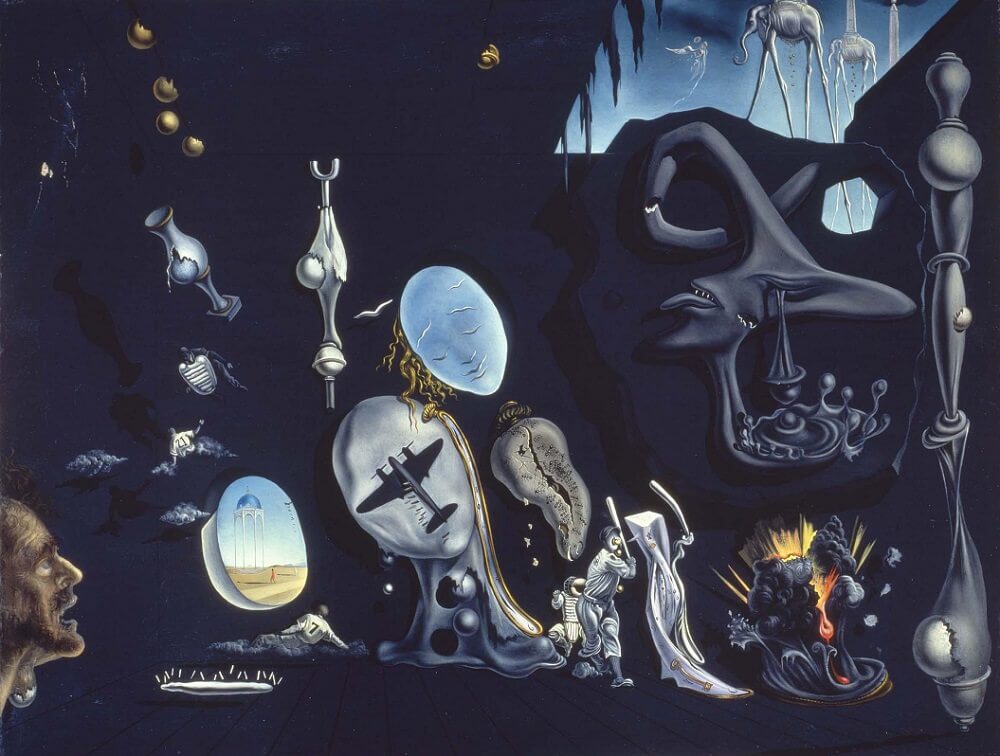Uranium and Atomica Melancholica Idyll, 1945 by Salvador Dali

Uranium and Atomica Melancholica Idyll, 1945 is an unlikely amalgamation of the most random objects combined together. A colorful explosion in the lower right corner emits sparks of bright yellow, flaming jets of orange, and thick, heavy black smoke. What major connection is there between the year 1945 and the atomic explosion? The answer is World War II- a war of mass destruction with the introduction of the atomic bomb. Death and depression are two major themes prevalent throughout the painting; two human faces are painted bluish-gray (which indicates human decay). Dali's choice of color for this particular painting successfully conveys this dismal feel. Black- a color that represents hopelessness and depression-dominates most of the painting. Dali juxtaposes the black with a few specks of bright blue and white to show that there exists hope and a new reality outside of the hellish darkness. A child plays in a golden brown field under a clear blue sky. Ironically enough it is next to the bluish-gray human face.
Salvador Dali's desire to "see things differently" - appealing to the subconscious, to memory, to the irrational content of dreams, in order to go beyond the vision of the human eye - is the basis of his Paranoid-Critical Method, which represents a new way of interpreting reality and his main contribution to Surrealism. His interest in subjects related to vision entails in-depth knowledge of the history of art, of the scientific advances of his time and of the new studies on the human psyche. In Uranium and Atomica Melancholica Idyll, 1945, Dali uses his characteristic figurative style inhabited by soft shapes, represented within a black image whose hollows illuminate another reality outside that which is identified by the airplane, explosion and bombs. Beginning in the late 1940s, Dali's work moves into a new mystical/nuclear phase, in which he makes a number of works that depict the disintegration of the atom in paintings with the religious subject matter.























